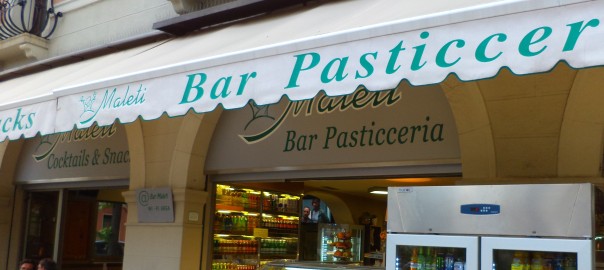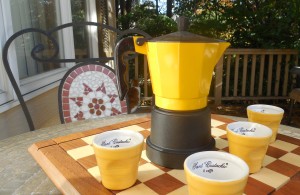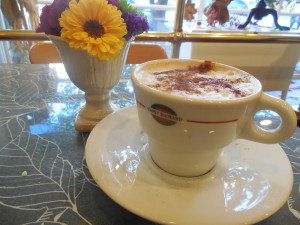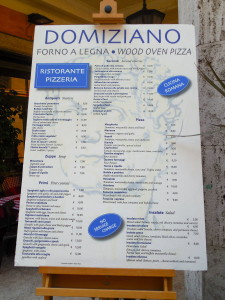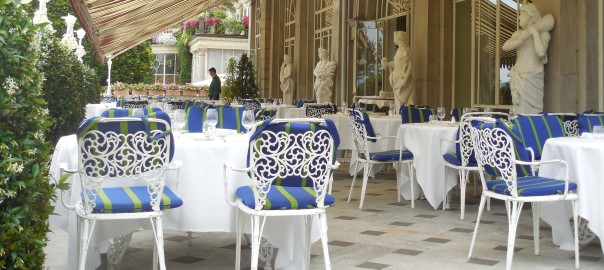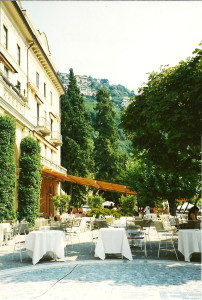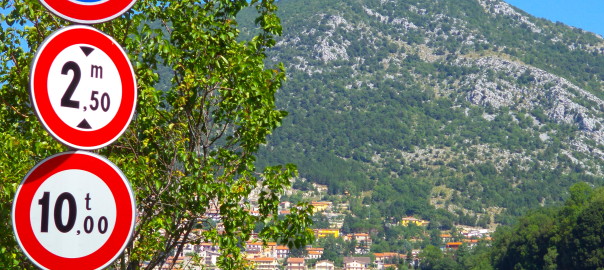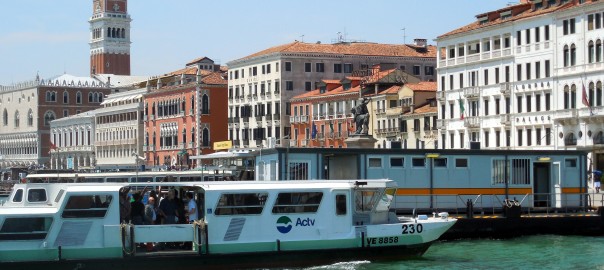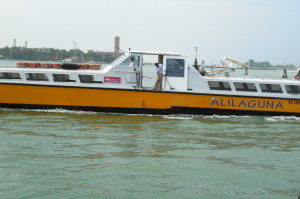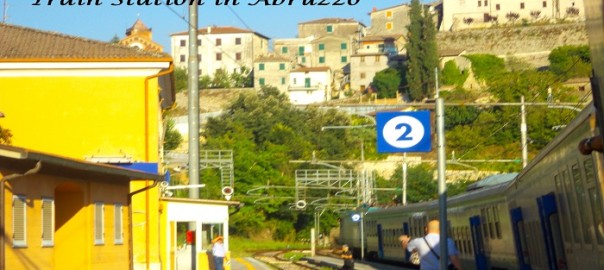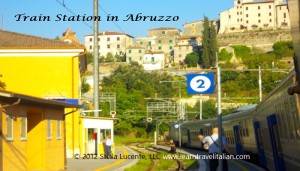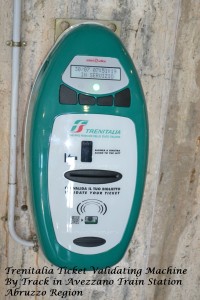Making Italian Reservations for Your Summer Vacation
Follow Caterina and learn how to make YOUR Italian reservations in the Conversational Italian for Travelers series of books!
The Conversational Italian for Travelers textbook begins each chapter with a dialogue from a story about the character Caterina, an American girl who travels to Italy to visit her relatives. As the story continues from one chapter to the next, we learn Italian, and about Italy, in an engaging way through Caterina’s experiences.
Making Italian Reservations for YOUR Summer Vacation—or Any Time!
Because Caterina visits Italy during the summer months for our story, she is able to join her Italian family on their traditional trip for the Ferragosto holiday that takes place on the week of August 15. As part of their preparations, Caterina’s sister-in-law Francesca asks Caterina to make hotel reservations for their family at their favorite family-run lakeside resort in the town of Stresa.
Listen in on Caterina’s conversation with the hotel manager at our website www.LearnTravelItalian.com and learn important Italian phrases that may be useful to plan YOUR vacation in Italy this summer!
The Cultural Note below, adapted from the Conversational Italian for Travelers textbook, focuses on how to use the Italian vocabulary needed to make and change reservations.
—Kathryn Occhipinti
Making Italian Reservations
Checking and Changing Italian Reservations
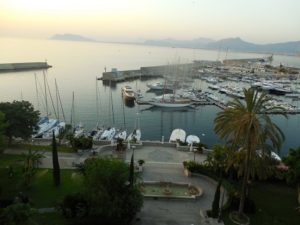
Let’s start with some basic phrases that will be helpful to know when calling or speaking to hotel personnel in order to make a reservation. To follow, we will learn about some general ways these phrases can be used.
| la prenotazione | reservation |
| Ho una prenotazione. | (I) have a reservation. |
| prenotare | to make a reservation |
| Ho prenotato | (I) have made a reservation… |
| riservare | to make a reservation |
| È riservato… | (It) is reserved… |
| l’ordine | order |
| ordinare | to order |
| Ho ordinato… | (I) have ordered… |
| annullare | to cancel (a reservation or order) |
| Ho annulato… | (I) have cancelled… |
| cambiare | to change |
| Ho cambiato… | (I) have changed… |
| controllare | to check |
| Ho controllato | (I) have checked… |
| confermare | to confirm |
| Ho confermato… | (I) have confirmed… |
| Vorrei/Desidero… | I would like/I want to… |
| …fare una prenotazione. | …make a reservation. |
| …annullare una prenotazione. | …cancel a reservation. |
| …cambiare una prenotazione. | …change a reservation. |
| …controllare una prenotazione. | …check a reservation. |
| …confirmare una prenotazione. | …confirm a reservation. |
| …ordinare la prima colazione. | …order breakfast. |
| . | |
| Si, la camera è riservata. | Yes, the room is reserved. |
| Lei ha una stanza riservata per sabato. | You (pol.) have a room reserved for Saturday. |
******************************
Both Italian verbs prenotare and riservare translate into English as “to book/to make a reservation.” Their corresponding nouns are la prenotazione and la riservazione. Although both nouns translate as the English word reservation, the use of each Italian word varies with the situation.
Most commonly, when asking to make Italian reservations at a hotel, on a train, or at the theater, Italians use the word prenotazione, with the verb fare, as Caterina does when she says during her telephone conversation in our dialogue Chapter 12 Dialogue “Phone Conversations,” “Vorrei fare una prenotazione,” for “I would like to make a reservation.”
When boarding a train or entering a theater with a ticket that has a reserved seat, Caterina would have “un biglietto con la prenotazione,” or “a ticket with the reservation.” If Caterina wants to tell someone she is checking her seat to make sure she is in the right place, she would use the verb controllare, as in, “Controllo il biglietto con la prenotazione,” for “I am checking the ticket with the reservation.” Remember il controllore from Chapter 5 of our textbook Conversational Italian for Travelers, whose job it is to check tickets on passenger trains?
However, the actual room in the hotel or seat on the train or theater is referred to as reserved with the past tense, as in “Il posto è riservato.” The seat has been booked, and no one else can use it. The word riservato can also be used as an adjective. If someone else had made a prenotazione before Caterina, her request might be denied because of una camera riservata, una stanza riservata, or un posto riservato!
Now, what would happen if Caterina had to cancel a reservation she has made for a trip She would call the hotel and use the verb annullare and say, “Vorrei annullare una prenotazione,” for “I would like to cancel a reservation.” If she had placed an order for something that needed to be cancelled, Caterina would say, “Vorrei annulare un ordine.” Or if a reservation needed to be changed, she could use the verb cambiare, as in “Vorrei cambiare una prenotazione.”
And what should we do if we want to confirm a reservation? Just say, “Vorrei confermare una prenotazione.” Finally, instead of vorrei, one could also use the verb desidero for I would like. Also, as always, be polite and add per favore to the end of the sentence!
—Adapted from Conversational Italian for Travelers, Chapter 12, “Important Phrases and Grammar Note: Making, Checking and Changing a Reservation,” by Kathryn Occhipinti
Kathryn Occhipinti, MD, is the author of the
Conversational Italian for Travelers series of books and a teacher of Italian for travelers to Italy in the Peoria and Chicago area.
“Everything you need to know to enjoy your visit to Italy!”
Join my Conversational Italian! Facebook group and follow me on Twitter at StellaLucente@travelitalian1 and start to learn Italian today for FREE!
Conversational Italian! Facebook Group
Tweet @travelitalian1 for Stella Lucente Italian
YouTube videos to learn Italian are available from © Stella Lucente, LLC.
Learn Conversational Italian.
More information on and photographs of Italy can be found on Facebook Stella Lucente Italian and Pinterest Stella Lucente Italian.
Facebook Stella Lucente Italian
Pinterest Stella Lucente Italian
Visit learntravelitalian.com/download.html to purchase/download Conversational Italian for Travelers and find more interesting facts and helpful hints about getting around Italy! Learn how to buy train tickets online, how to make international and local telephone calls, and how to decipher Italian coffee names and restaurant menus, all while gaining the basic understanding of Italian that you will need to know to communicate easily and effectively while in Italy. —From the staff at Stella Lucente, LLC
Making Italian Reservations for Your Summer Vacation

